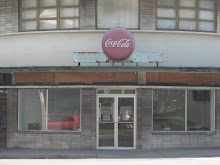
The Army is once again holding meetings on their activity at Makua Valley, that valley believed to contain certain sacred Hawaiian sites. This time they are seeking community input on the issue of live-fire training there. From what I can gather, the U.S. District Court for the District of Hawaii denied the army's request to conduct live-fire training *prior to completing an Environmental Impact Statement (EIS) back in Feb. 0f 2006. Roughly three years later, the army is back with its EIS available for the public in all its glorified legalese at http://www.garrison.hawaii.army.mil/makuaeis/drafteis/default.htm.
Although it appears that public sentiment toward the use of Makua seems to have swayed in favor of the aina, the major papers continue to present the issue in terms of a single native Hawaiian group vs. the U.S. Army. Is Malama Makua really the only group against the army's use of Makua for live-fire training?
Way back in 2001, the Star-Bulletin seemed to side with the army when it closed its editorial by saying, "Makua is home to at least 40 endangered species. Most of these are located along the Makua Valley rim -- miles away from the training and impact area" (Oct. 4, 2001). In all fairness to the Bulletin, those were different times.
But while the major papers are at least reporting on the community meetings and urging the public to let their opinions be heard, there still seems to be a conservative bent to them.
Whereas 2006 Earthjustice.org reported that, "Over 100 Native Hawaiian cultural sites have been identified at Mäkua, including heiau (Hawaiian temples), ahu (altars), burials and petroglyphs", the specific details of the artifacts tend to go unmentioned in the daily papers or television reports. Reports usually describe the artifacts in terms of Hui Malama's opinion.
In the Advertiser's latest news article on the community meetings, for example, it reported that, "Hui Malama believes there are sacred Hawaiian sites in the valley that could be irreparably harmed." The fact of there being sacred Hawaiian sites in the valley is not presented as fact but as the opinion of these radical native Hawaiian groups. Wouldn't it be possible to fact check with some independent organization to verify the existence of these heiaus?
My naive response to all of this is: Why would anyone in their rightful mind choose to practice live ammunition in a beautiful valley? Why not a remote plain somewhere Nevada, Montana, or South Dakota--lots of great land, far from any human habitation. We could probably even find someplace that is not considered sacred to native peoples. (The alternative sites being considered, by the way, are in California and at Pohakuloa on the Big Island.) Why in the world would anyone want to practice their live ammunition in a beautiful valley in the middle of the Pacific Ocean? And why would citizens of this state ever allow their valleys to become riddled with used ammunition--all in the name of fire practice?
According to the Honolulu Adveritser, the EIS is expected to finalized in the spring of 2009! The army really wants to do this.
Public comments may be submitted through Nov. 3 online at the site listed above. They are also being accepted via fax at 808-656-3162; by e-mail at usaghipaomakuaeis@hawaii.army.mil or by mail at Attn: Makua SDEIS Public Comments, USAG-HI Public Affairs Office, 742 Santos Dumont, WAAF, Schofield Barracks, HI 96857.













No comments:
Post a Comment